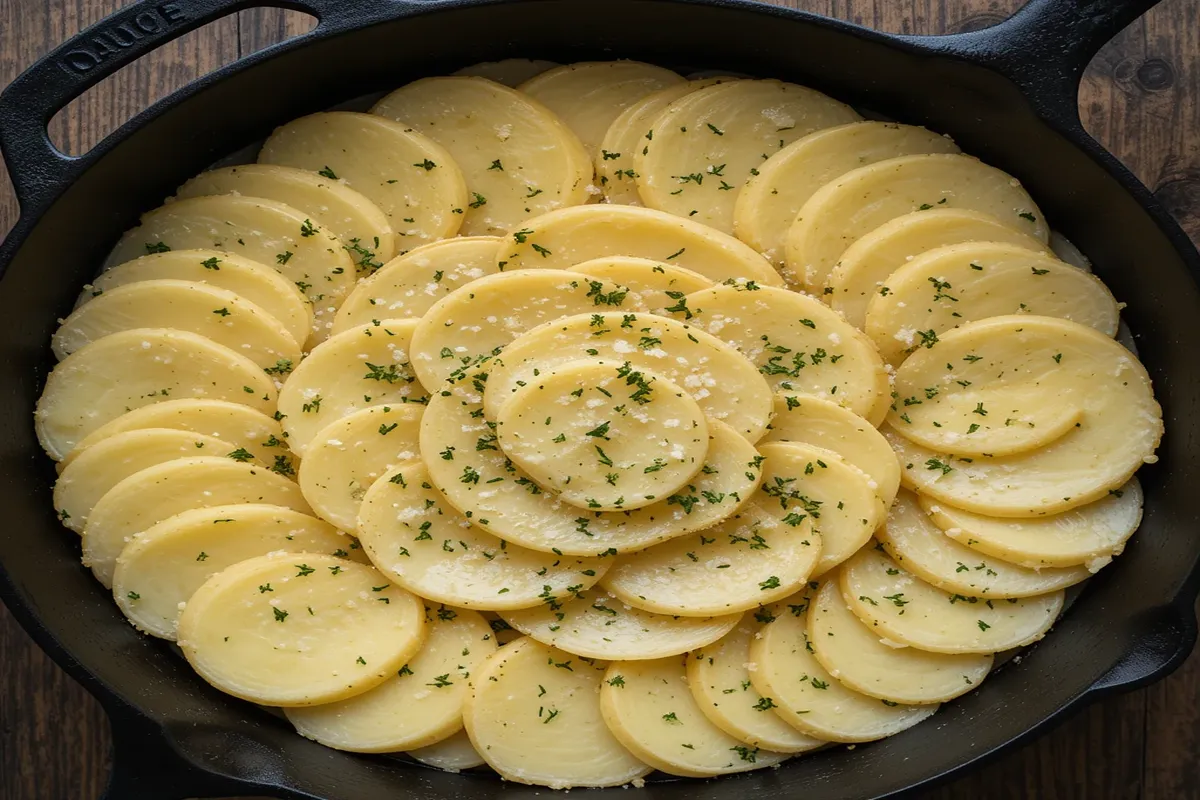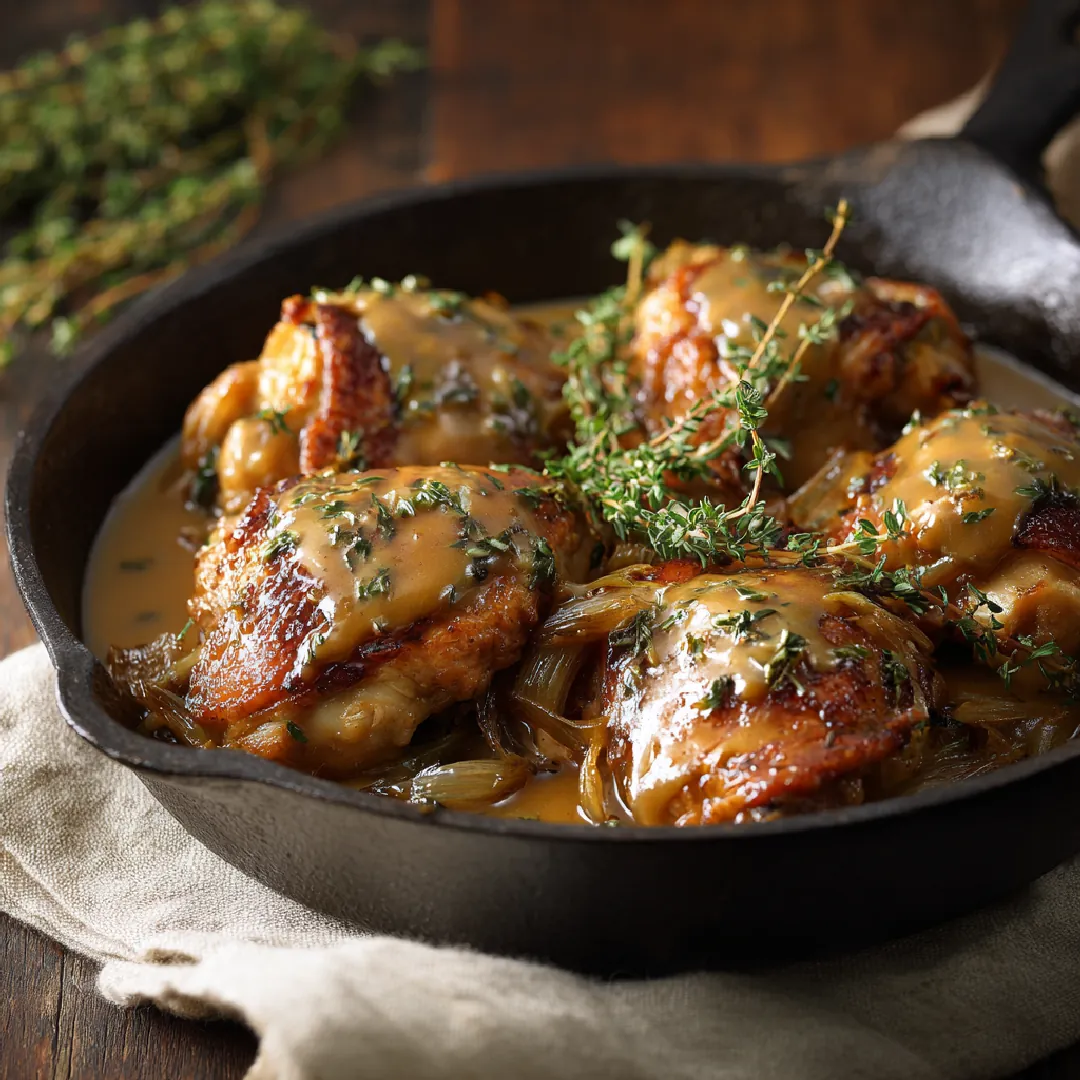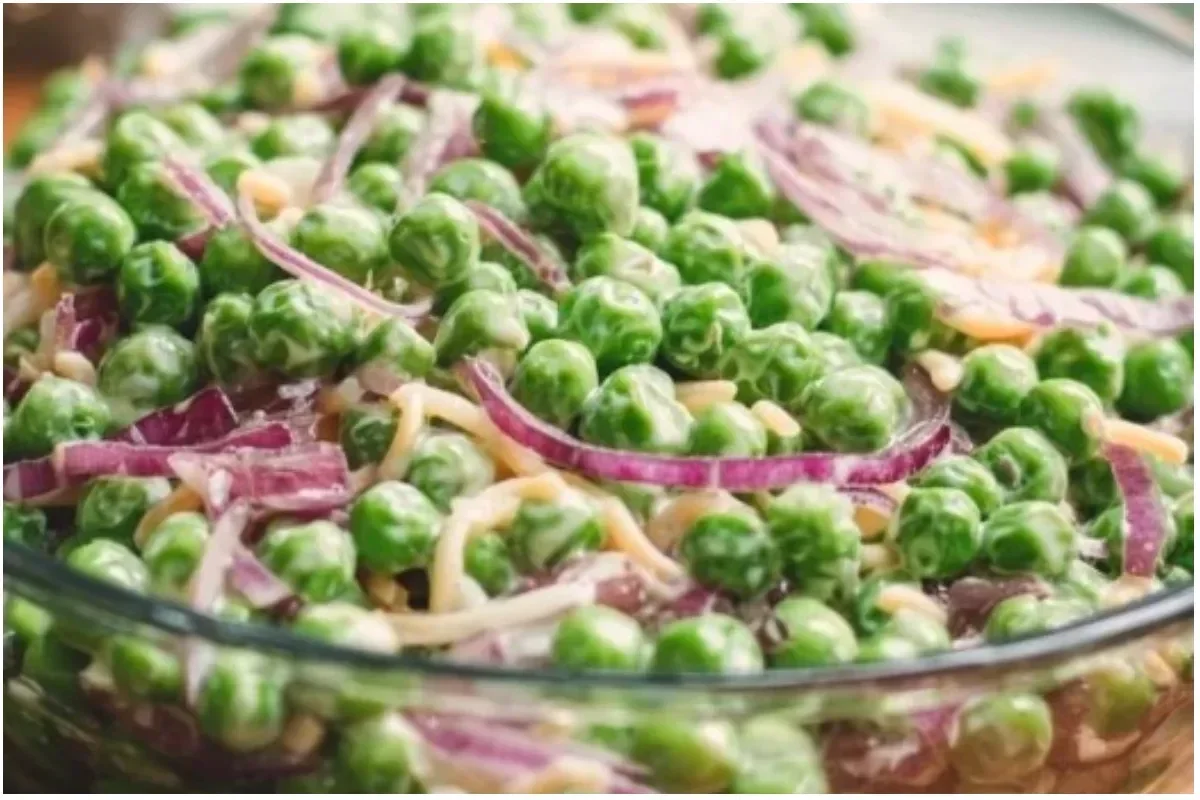If there’s one dish that perfectly combines simplicity and elegance, it’s the potato galette. This crispy, golden masterpiece isn’t just a treat for your taste buds; it’s a feast for the eyes too. Whether you’re looking to impress guests at a dinner party, elevate your weeknight meals, or explore a timeless recipe rooted in French tradition, the potato galette is your answer. Let’s dive into everything you need to know about this show-stopping dish.
Table of Contents
What is a Potato Galette?
If you’ve never encountered a potato galette before, let me paint you a picture. Imagine thinly sliced potatoes, meticulously layered into a circular, crispy-edged masterpiece, cooked to golden perfection. Sounds fancy, right? Surprisingly, it’s not as complicated as it looks!
The Origins of Potato Galette
The term galette comes from French cuisine, traditionally referring to a flat, round dish, often made with pastry or dough. In the case of a potato galette, pastry takes a back seat while humble potatoes steal the spotlight. This dish embodies rustic charm—it’s hearty, flavorful, and rooted in simplicity, qualities that make it a timeless classic.
Ingredients You’ll Need for a Traditional Potato Galette
A potato galette may look like a restaurant-worthy dish, but it’s made from simple, everyday ingredients you likely already have in your kitchen. Let’s break it down:
Essential Ingredients
| Ingredient | Quantity |
|---|---|
| Russet or Yukon Gold Potatoes | 4–5 medium-sized |
| Unsalted Butter | 4 tablespoons |
| Olive Oil | 2 tablespoons |
| Garlic (minced) | 2 cloves |
| Fresh Thyme or Rosemary | 1 teaspoon |
| Salt | 1 teaspoon |
| Black Pepper | ½ teaspoon |
These are the basics, but the real magic happens when you start experimenting with flavors.
Optional Additions for Extra Flavor
- Parmesan Cheese: A sprinkle on top before baking adds a nutty richness.
- Shallots or Onions: Layered with potatoes for a sweet and savory touch.
- Bacon Bits: For a smoky, indulgent variation.
- Gruyère or Mozzarella Cheese: If you want that cheesy, gooey factor.
Step-by-Step Recipe for a Classic Potato Galette
It’s time to roll up your sleeves and get cooking. Don’t worry—this isn’t rocket science! If you can slice, layer, and flip, you’re already halfway to making the perfect potato galette.
Preparing Your Potatoes: Peeling, Slicing, and Prepping
Potatoes are the heart and soul of this dish, so treat them with love. First, peel your potatoes—unless you prefer a rustic look with the skin on. Then, slice them thinly, about 1/8 inch thick. A mandoline slicer works wonders here for even cuts, but a sharp knife and steady hands will do the trick too.
Once sliced, pat the potatoes dry with a paper towel to remove excess moisture. Trust me, this step is crucial for achieving that crispiness we all love.
“Pro Tip: Soak the potato slices in cold water for 15 minutes before drying them. This removes excess starch, giving you crispier layers.”
Assembling the Potato Galette: Layering Like a Pro

Grab a cast-iron skillet or a heavy-bottomed, oven-safe pan. Start by melting butter and olive oil together over medium heat. Once the butter is foamy, remove the pan from the heat and arrange your potato slices in overlapping circles. Think of it as piecing together a beautiful puzzle. 💡
Layer the slices tightly, adding a pinch of salt, pepper, and minced garlic between layers. For added flavor, sprinkle thyme or rosemary as you go. When all the potatoes are layered, press them down gently with a spatula to compact them.
“Imagine the layers of a potato galette like the pages of a book—tight, seamless, and full of hidden goodness in every turn.”
Cooking Methods: Stovetop, Oven, or Both?
Here’s where the magic happens. You’ll start cooking the galette on the stovetop to form that golden, crispy crust, then transfer it to the oven to finish. Here’s the step-by-step process:
- Cook the galette on medium heat for 8–10 minutes, pressing down occasionally with a spatula to ensure the base crisps up evenly.
- Transfer the skillet to a preheated oven at 375°F (190°C). Bake for 25–30 minutes, or until the top is beautifully golden.
- To serve, flip the galette out onto a plate (this part is super satisfying, but be careful—it’s hot!).
“Pro Tip: Use parchment paper to line your pan if you’re worried about sticking. It makes flipping the galette a breeze.”
Variations of Potato Galette for Creative Cooks
Feeling adventurous? The classic potato galette is just the beginning. Here are some creative twists to try:
Sweet Potato Galette
Swap out regular potatoes for sweet potatoes. Their natural sweetness pairs beautifully with cinnamon and nutmeg, making it perfect for a fall-inspired version. 🎃
Cheese-Stuffed Potato Galette
Who doesn’t love cheese? Add a layer of shredded Gruyère or mozzarella between the potato slices for a gooey, melt-in-your-mouth experience.
Vegan Potato Galette
Skip the butter and use plant-based alternatives like vegan butter or olive oil. Add a pinch of nutritional yeast for a cheesy, dairy-free flavor boost.
Nutrition Facts (Per Serving)
| Nutrient | Amount |
|---|---|
| Calories | 280 kcal |
| Carbohydrates | 35g |
| Protein | 5g |
| Fats | 14g |
| Fiber | 3g |
| Sodium | 200mg |
The Science Behind a Crispy, Golden Potato Galette
Ever wondered why some potato dishes turn out soggy while others are perfectly crispy? It’s all about technique. Here’s what makes the galette crispy and golden:

- Dry Potatoes: Removing moisture ensures the edges crisp up rather than steam.
- Even Heat: A cast-iron skillet distributes heat evenly, giving the galette that uniform golden crust.
- Right Fat: Butter provides flavor, while olive oil helps achieve a higher smoke point for crispiness.
“Think of fat as the secret glue that holds the galette together, giving it both structure and flavor.”
Common Mistakes When Making Potato Galette (And How to Fix Them)
Even with simple ingredients, things can sometimes go sideways in the kitchen. Don’t worry—we’ve all been there! Here’s a list of the most common potato galette pitfalls and how to fix them.
Soggy Galette: Causes and Solutions
There’s nothing worse than cutting into your galette, only to find it’s a mushy mess. So, why does this happen?
- Too Much Moisture in Potatoes: If you skip drying your potato slices, they’ll release excess water while cooking, making the galette soggy.
Fix: Always pat your potatoes dry or soak them in cold water for 15 minutes to remove excess starch. - Pan Not Hot Enough: If the skillet isn’t preheated properly, the bottom layer won’t crisp up.
Fix: Heat your skillet over medium heat for a few minutes before adding the potatoes.
“Remember, a soggy galette is like a deflated balloon—disappointing. Crispiness is key!”
Uneven Browning: How to Avoid It
Uneven browning happens when the heat in your pan isn’t evenly distributed or your layers are inconsistent.
- Uneven Heat: If one side of the skillet is hotter than the other, some parts will burn while others remain pale.
Fix: Use a cast-iron skillet, which retains and distributes heat more evenly than other pans. - Irregular Potato Slices: If the slices aren’t uniform, thinner ones will cook faster than thicker ones.
Fix: Use a mandoline slicer for perfectly even slices.
Why Does My Galette Fall Apart?
A galette should hold together like a beautiful mosaic when sliced, but if it’s crumbling, here’s what might be wrong:
- Potatoes Not Tightly Packed: Loose layers won’t bind together.
Fix: Press down on the layers firmly with a spatula while assembling and during cooking. - Not Enough Fat: Butter and oil act as a binding agent. Skimping on them can lead to a fragile galette.
Fix: Don’t be shy with the fat—it’s what makes a galette rich and cohesive!
“Think of your galette like a sandcastle. If the layers aren’t tight, it’ll crumble when you slice it.”
Serving Potato Galette: Tips for Presentation and Pairings
You’ve worked hard on your galette, so let’s make sure it shines on the plate! Presentation and the right accompaniments can elevate this humble dish into a gourmet experience.
How to Slice and Serve Without Breaking the Layers
To slice a potato galette cleanly, let it rest for 5–10 minutes after removing it from the oven. This allows the layers to set and makes slicing much easier. Use a sharp knife or a pizza cutter for clean, even slices.
“Presentation matters—remember, we eat with our eyes first!”
Best Sauces and Dips to Complement Potato Galette
While a potato galette is fantastic on its own, the right sauce can take it to another level. Here are some pairing ideas:
- Crème Fraîche or Sour Cream: The tanginess balances the richness of the potatoes.
- Herb-Infused Aioli: A garlicky dip with parsley or chives adds a fresh kick.
- Truffle Oil Drizzle: A touch of truffle oil will give your galette a luxurious finish.
- Tomato Relish or Chutney: Sweet and tangy, it provides a vibrant contrast.
Tips for Storing and Reheating
Life gets busy, and the beauty of a potato galette is that it can be made ahead of time without sacrificing quality. Here’s how to do it:
How to Store Leftover Potato Galette Properly
Once cooled, wrap your galette tightly in plastic wrap or aluminum foil. Store it in the refrigerator for up to 3 days. For longer storage, you can freeze it.
Reheating Techniques to Retain Crispiness
The key to reheating a galette is to bring back that crispy texture. Avoid microwaving it (trust me, it’ll turn soggy). Instead, try these methods:
- Oven: Preheat your oven to 350°F (175°C) and reheat the galette for 10–15 minutes. This restores the crispiness perfectly.
- Skillet: Reheat slices in a non-stick skillet over medium heat. Cover the pan for a few minutes to warm it through, then remove the lid to crisp up the edges.
“Leftovers don’t have to feel like a compromise—with the right techniques, they’re just as good as fresh!”
Potato Galette for Special Occasions and Holidays
A potato galette is the ultimate crowd-pleaser for any special occasion. It’s versatile, elegant, and easy to customize for festive gatherings.
Creative Presentation Ideas for Festive Gatherings
Want to make your galette the star of the table? Here are a few ideas:
- Mini Galettes: Instead of one large galette, make individual-sized portions in muffin tins. Perfect for parties!
- Shaped Galette: Use cookie cutters to cut the cooked galette into shapes like hearts or stars.
- Garnish Like a Pro: Add fresh herbs, edible flowers, or a drizzle of balsamic glaze for a finishing touch.
How to Customize Your Galette for Different Seasons
The beauty of a potato galette is how adaptable it is. Here are seasonal ideas to inspire you:
- Spring: Add fresh peas and mint between the layers for a bright, fresh flavor.
- Summer: Incorporate thin slices of zucchini or eggplant for a lighter twist.
- Fall: Layer sweet potatoes with a hint of cinnamon and nutmeg for cozy vibes.
- Winter: Add cheese and crispy bacon for an indulgent, hearty dish.
Frequently Asked Questions About Potato Galette
Can I Freeze a Potato Galette?
Absolutely! Let it cool completely, wrap it tightly in plastic wrap and aluminum foil, and freeze it for up to 2 months. To reheat, bake straight from the freezer at 375°F (190°C) until warmed through.
What Are the Best Potatoes to Use?
Russet and Yukon Gold potatoes are the top choices. Russets are starchier and give a crispier texture, while Yukon Golds are buttery and creamy.
Can I Make a Gluten-Free Potato Galette?
Luckily, potato galettes are naturally gluten-free! Just ensure any optional add-ins (like sauces or cheeses) are also gluten-free.
How Do I Prevent My Galette From Sticking to the Pan?
Use a non-stick skillet or line your pan with parchment paper. A generous layer of butter and olive oil also works wonders.
How Thin Should I Slice the Potatoes?
Aim for slices about 1/8 inch thick. Too thick, and they’ll take longer to cook; too thin, and they’ll fall apart.
Can I Use a Mandoline for Even Slices?
Yes, a mandoline is the best tool for achieving uniformly thin slices. Just watch your fingers!
Conclusion: Mastering the Art of Potato Galette
And there you have it—a complete guide to creating, serving, and customizing the perfect potato galette! Whether you’re a beginner or a seasoned chef, this dish is versatile, forgiving, and oh-so-rewarding. From its crispy golden crust to its soft, buttery layers, a potato galette truly is a celebration of simple ingredients done right.
“The potato galette is more than just a dish; it’s a reminder that even the simplest things can be elevated into something extraordinary.”
So, grab your skillet, slice those potatoes, and start creating your masterpiece. Bon appétit! 🍽️
Print
Potato Galette
Enjoy layers of thinly sliced potatoes, crisped to perfection with a golden, buttery crust. A simple yet elegant dish that melts in your mouth
- Total Time: 1 hour
- Yield: 4 1x
Ingredients
- 4 large potatoes (Yukon Gold or Russet)
- 3 tablespoons unsalted butter, melted
- 1 tablespoon olive oil
- 1 teaspoon garlic powder
- 1 teaspoon salt
- 1/2 teaspoon black pepper
- 1 teaspoon fresh thyme leaves (optional)
- 1/4 cup grated Parmesan cheese (optional)
Instructions
- Preheat your oven to 400°F (200°C). Grease a cast-iron skillet or oven-safe pan with 1 tablespoon of butter.
- Peel and thinly slice the potatoes using a mandoline or sharp knife.
- Arrange the potato slices in overlapping circles, covering the entire bottom of the skillet. Brush with butter and olive oil, then sprinkle with salt, pepper, and garlic powder.
- Repeat layering until all potatoes are used, brushing each layer with butter and seasoning.
- Press the potatoes gently with a spatula to compact them. Cover with foil and bake for 25 minutes.
- Remove the foil, sprinkle with Parmesan (if using), and bake for another 20–25 minutes until golden and crispy.
- Let it rest for 5 minutes before slicing. Garnish with fresh thyme and serve warm.
- Prep Time: 15 min
- Cook Time: 45 min
You might also like Crabe Brulé Recipe: A Culinary Delight





